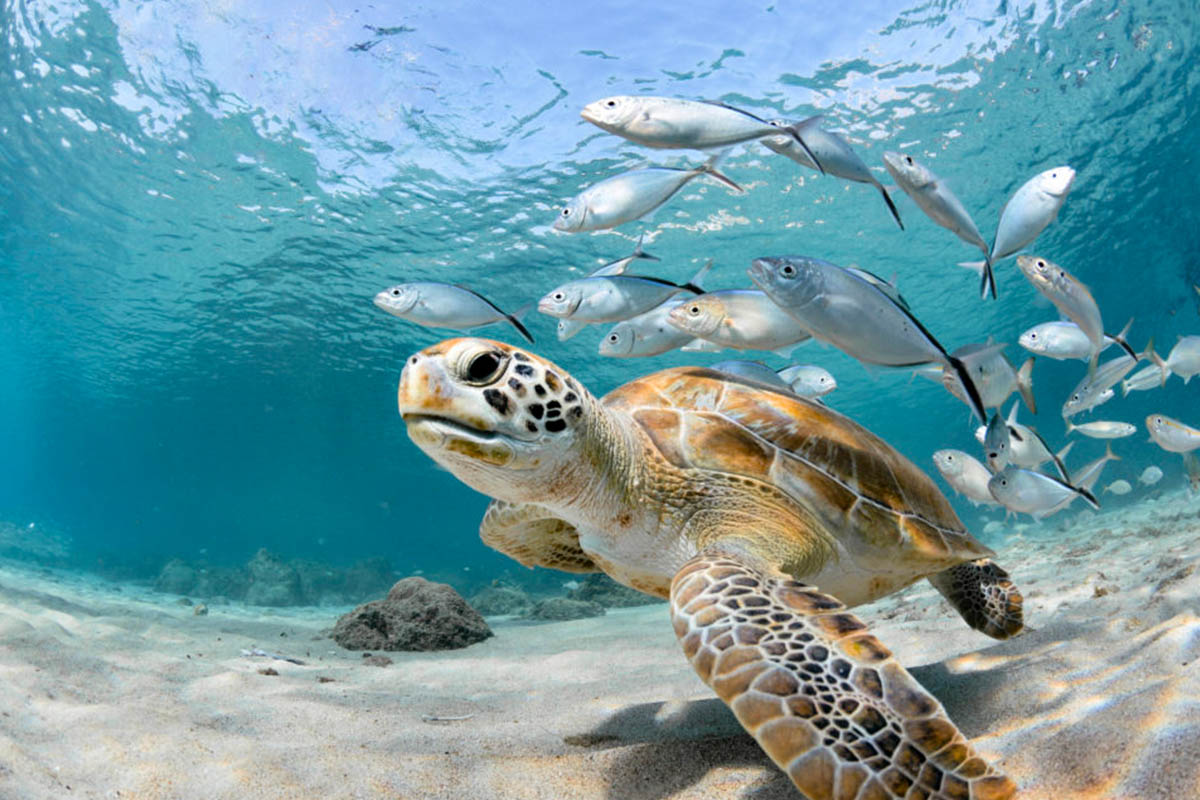
Quick guide to using underwater video lights
Sometimes, the sun filtering through the surface above the fish you’re filming isn’t quite enough. Investing in a video light or strobe is one of the best ways to take your underwater videography to the next level. This guide to using underwater video lights will give you some practical pointers. Video lights are an underwater videographer’s best friend, if you get to know them well enough.
Download FREE eBook featuring 40 proven fundraising techniques to finance your next overseas experiential adventure
Why use a light?
The deeper you go underwater, the more colour gets lost. This is because of the water that the colours get filtered through. Reds, yellows and oranges tend to fade first, making the scene in front of you appear blue (on camera, as well). A video light restores the true, bright colours to an underwater scene. In order for a video light to work at its best, you need to make sure that you’re as close to your subject as possible. The closer the video light is to the subject, the brighter the colours will appear.
Strobes vs constant lights
There are two types of underwater lighting for photos and video. A strobe is another name for an underwater “flash” for photos. This means that a strobe emits a very strong flash of light for a short moment. Note: these are only used for underwater photography – not video. A constant light is an LED torch, flashlight, or dive light. These emit a light beam for a long period of time, depending on its battery life. We’ll be focusing more on using underwater video lights of the constant kind.
Choosing a video light
There are several things to keep in mind when buying a video light. Here are the most important aspects to consider:
Strength of the light
The light strength is measured in lumens. Usually, basic video lights have between 500 and 1000 lumens. A medium-range light has 2000 to 3000 lumens and the most powerful ones can go up to 30 000 lumens.
The beam angle
This is the width of the beam. This influences the size of the area lit up by the beam. The type of lights you can choose from include flood-only lights (that cover a wide area); spot-only lights (that act as a spotlight); and variable lights. There are also add-ons that you can buy to change your light beam from spot to flood, or from flood to spot.
Beam quality
The light beam should have the same strength of light throughout the beam. Having irregular dark spots in the beam will affect your subject’s appearance.
Build professional skills as an underwater videographer on the tropical reefs of Southern Africa
Modes and levels
One light could have several modes of light available. The brightness or power of the light itself could also be adjustable. Make sure about this when you’re looking for the right video light.
Controls
This refers to which controls (buttons and dials) the light has in order to operate. This varies between twist-on lights, push-button lights, sliding levers and even remote controls. You can test out a few of these when looking at video lights, and see which one you’re most comfortable with.
Mount
How the light is mounted. Make sure that the light is compatible with your housing. If you can’t mount it onto your camera housing or arm, you’ll have to buy an additional attachment or extension.
Batteries
How long batteries will lasts, its charging speed, and whether you can interchange the batteries. It’s best if your light has interchangeable batteries, so you can switch them once one runs out of power. It goes without saying that the longer the battery life of your video lights, the better. You can then spend more time filming underwater.
One or two lights?
It’s best to get two video lights, as it will light up the subject from both sides and cover more of the area you’re filming. However, if you’d like to use only one light, then you can look at one with a wide beam and a high number of lumens. This will ensure that the scene you’re filming is still lit properly.
These are the main things you need to know about using underwater video lights. These lights will add some necessary colour and vibrancy to your underwater videos. For more underwater colour tips, see our post on fluorescent underwater video. Learn more about the art of underwater film on our Underwater Videography program. It takes place in picturesque Mozambique or in Scottburgh, South Africa.

Blogger Profile - Rouxne van der Westhuizen
Rouxne has an Honours degree in journalism and media studies. She specialises in wildlife conservation writing, travel journalism and blogging.
Kickstart your wildlife media career!
Find your perfect wildlife media speciality program




